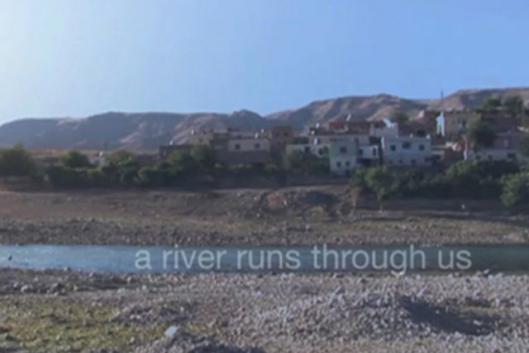Over the last decade, as the effects of climate change have become increasingly visible, there has been a lot of talk from big companies, banks and governments about promoting “clean” energy projects – meaning energy that is not produced from fossil fuels.
As a result, a number of countries have, for example, been developing or expanding nuclear power production.
Obviously, the first thing this brings to mind today is the tragedy suffered by the Japanese people, with whose plight we deeply sympathize. The recent earthquake and tsunami that triggered the current nuclear disaster in Japan clearly illustrate that the reality faced by the Japanese people in connection with the Fukushima nuclear power plant is a far cry from what could genuinely be viewed as clean energy.
Issue 164 – March 2011
OUR VIEWPOINT
DAMNED DAMS AROUND THE WORLD
-
30 March 2011On a hot May day, a peasant farmer named Bounsouk looks out across the vast expanse of water before him, the 450-square-kilometer reservoir behind the new Nam Theun 2 dam in Laos. At the bottom of the reservoir is the land where he once lived, grew rice, grazed buffalo, and collected forest fruits, berries, and medicinal plants and spices. Now there is just water, water everywhere. “Before the flood I could grow enough rice to feed my family and I had 10 buffalo,” he says. “I like our new houses and I like having electricity in the new village, but we do not have enough land and the soil quality is very poor. Now I can’t grow enough rice to feed my family, and three of my buffalo died because they didn’t have enough food.”
-
30 March 2011A hydroelectric complex comprising two dams and the diversion of the Xingú River from its natural course on the stretch that flows through the state of Pará; a cost of more than 16 billion dollars; the flooding of 516 square kilometres of Amazon forest; impacts on a total of 1,522 square kilometres of forested lands; between 100 and 142 square kilometres of land left in permanent drought; changes in the river ecosystem, with the introduction of foreign fish species and the extinction of others; loss of biodiversity, which is the source of food and income for millions of people in the Amazon; direct or indirect impacts on 30 indigenous territories inhabited by more than 13,000 people from 24 indigenous ethnic groups; the forced displacement of between 20,000 and 40,000 people; 80,000 une
-
30 March 2011Cause and effect of a dam The company staff came And said nothing would happen Suddenly a surprise The parents rose up in protest The girls made themselves pretty Because more than 4,000 men came to town [...] Some of the girls got caught up And were showered with promises They said they had motorcycles and cars Lots of money And someday they would get married But something went wrong After the adventure, their bellies started growing And then came the suffering Children in their arms And no one to care for them [...]
-
30 March 2011Indonesia: Since April 2005, two companies involved in the building of a mega-dam in Indonesia, both owned by the a former Vice President of Indonesia, have been compulsory purchasing land from people around the Sulewana river in Poso, Central Sulawesi to make way for the construction and the displacement it will cause. The project, known as, Poso II will affect the lives of up to 2,000 people. Residents of Peura Village are attacked by police officers as they try to prevent construction access.
-
8 March 2011The problems associated with large-scale hydropower dams are not a new issue to the Mekong basin. Originating in the Tibetan Himalayas, the Mekong River weaves through Yunnan province in southern China before passing through a small part of Burma, then into Laos, where for a long stretch it forms the Lao-Thai border in north and northeastern Thailand, and then flows south through Cambodia and down to the Mekong delta in Vietnam. Over the past decades, many parts of this river-rich region have been seriously impacted by large-scale hydropower dams.
-
8 March 2011Along the Congo River in the Democratic Republic of the Congo the Inga hydropower scheme has developed a series of hydroelectric dams, two of them already built – Inga I and Inga II- and two more under development – Inga III and Grand Inga (see WRM Bulletin 138, 77). The Inga III is being developed by the Westcor consortium and would be a tunnel diversion hydropower scheme producing 3,500 MW of electricity with a total cost up to $8 billion. The Grand Inga Dam includes the related Inga 3. This World Bank US$80 billion project is the world’s largest hydropower scheme and could produce more up to 39,000 MW of electricity, over twice the power generation of Three Gorges Dam in China, and more than a third of the total electricity currently produced in the whole Africa.

